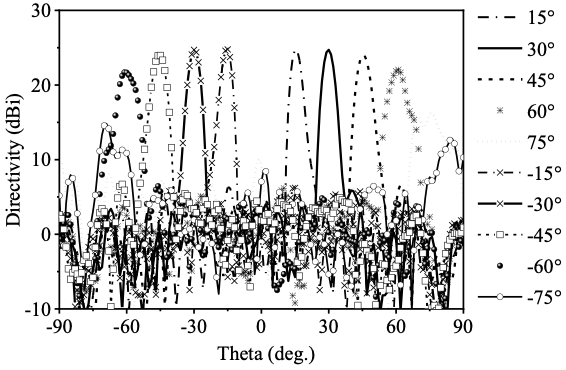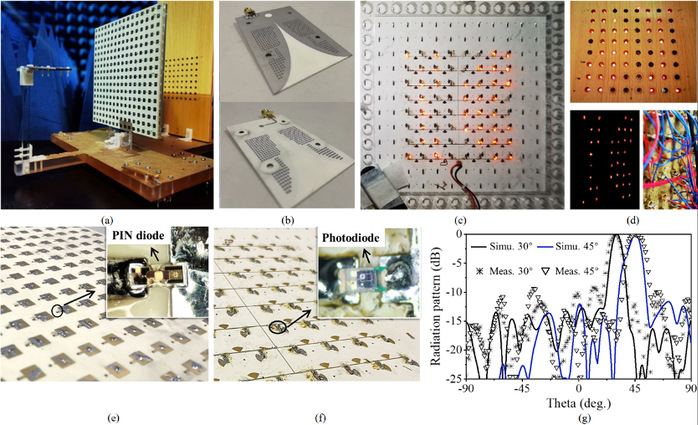The upcoming 6G wireless network poses numerous challenges, including continuous space coverage, hybrid near-/far-field beamforming, multi-user positioning/sensing, and holographic multiple-in-multiple-out (MIMO), and requires economical antenna solutions. Low-cost, high-gain beam-steerable antennas are therefore in high demand to overcome these difficulties. Compared to conventional microstrip phased arrays, reconfigurable metasurfaces have advantages of low loss and low cost due to simpler feeding networks and fewer transmit/receive (T/R) modules. However, some aspects of conventional reconfigurable microstrip relectarrays (RAs) such as scalability of size, operating frequency, and number of polarizations, are limited by the wire-controlled architecture, which hinders the generation of multi-polarized multi-beams with high gains in millimeter wave bands.
To solve the abovementioned problems, Assistant Professor Lin Fenghan's group in SIST has recently introduced a new concept of low-cost photonic microwave phased array, and utilized light instead of wires to transmit beamforming signals. Their results were published in an article entitled "Light Controlled Large-Scale Wirelessly Reconfigurable Microstrip Reflectarrays" in IEEE Transactions on Antennas and Propagation.
In the study, the researchers demonstrated a light-controlled microwave reconfigurable RA to show its potential advantages in multiple scenarios such as base stations, satellite communication, and scattering communication. The proposed method utilizes light to control the ON- and OFF-state of the integrated positive-intrinsic-negative (p-i-n) diodes wirelessly and binaurally through light-sensitive resistance of photodiodes (PDs). The concept was validated by simulation first, where a 1 bit 32 × 32 wirelessly reconfigurable microstrip RA is designed at 10 GHz with a beam-steering range of ±60◦ for sidelobe levels <-10 dB, marking a record of 1024 elements with a tri-layer configuration. Experimentally, the light-control scheme was further validated by a smaller porotype of 256 elements, where a light-controlled beam steering from 30◦ to 45◦ was demonstrated.

Design of light-controlled element

Simulated E-plane radiation pattern for the 1024-element reconfigurable reflectarray

Illustration of the proposed light-controlled microstrip reflectarray and measured results
The proposed photonic microwave phased array antenna structure resolves the wire-routing complexity concerning the design of reflective metasurfaces, and offers a new possibility for further improving the maximum directivity, upper operating frequency, and number of independently controllable polarizations of reconfigurable microstrip RAs. This paves the way for developing very large reconfigurable intelligent surfaces (VRIS) and phased arrays at a significantly-reduced cost for the 6G wireless communication and low-orbit satellite communication. This work was recently awarded the Best Student Paper Award (3rd Prize) at the ACES-China 2022 International Conference.

Certificate of Best Student Paper Award (3rd) at ACES China 2022 International Conference
Ph.D. candidate Miao Siyu in SIST is the first author and Prof. Lin Fenghan is the corresponding author.
**This article was provided by Prof. Lin Fenghan

